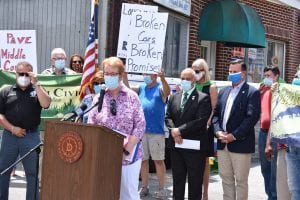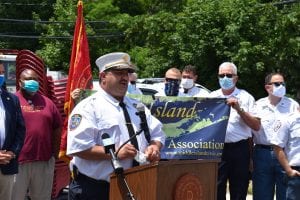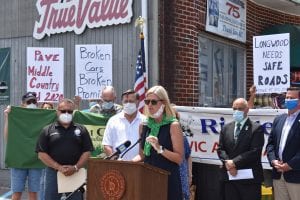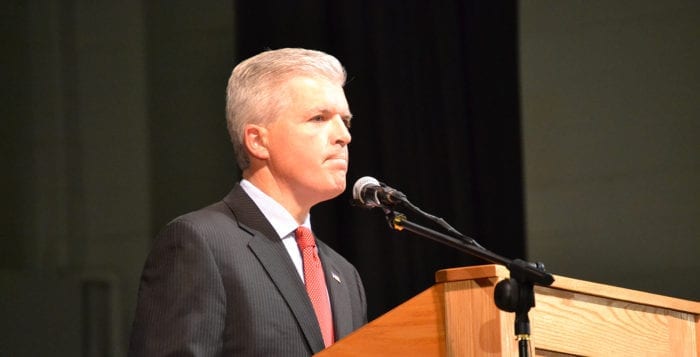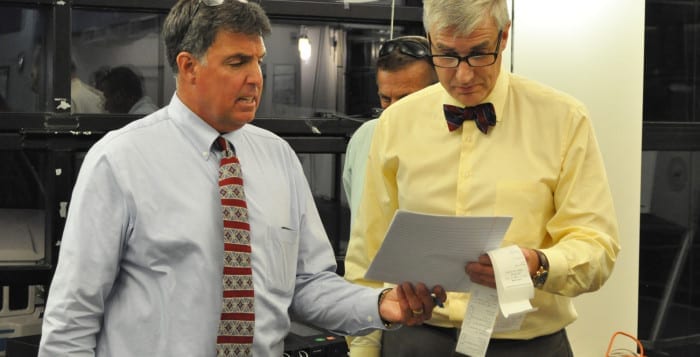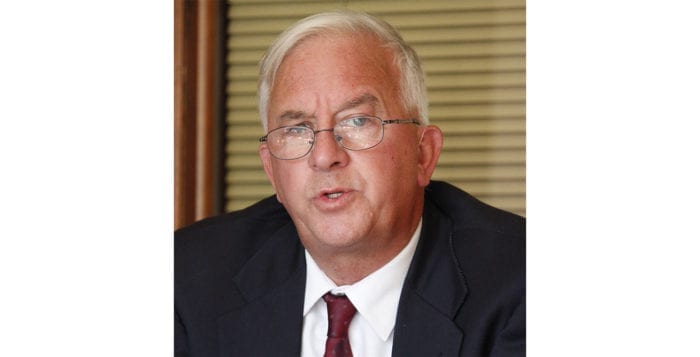By Lisa Scott
There is a presumed lack of engagement in civics of today’s youth: an inability to discern truth from hyperbole, ignorance of our nation’s history and disinterest in government. Yet the U.S. Supreme Court and 32 state supreme courts have explicitly stated that preparation for capable citizenship is a primary purpose of education, and programs in New York State and Suffolk County do bring together education and civics.
At a League of Women Voters’ program several weeks ago, a group of high school students from six western Suffolk districts participated in the League’s “Student Day at the Suffolk County Legislature.” This program, developed with the Suffolk County Legislature’s Presiding Officer, was initiated in 2015 but interrupted by COVID. Returning to Hauppauge this year, it was praised by the participants, teachers, and legislators.
Students (selected by their schools) knew that they would be either supporting or opposing an “Introductory Resolution” (developed in advance): ”RESOLVED, that in order to make our Suffolk County schools as safe as possible, the Suffolk County Police Department is hereby authorized, empowered and directed to allow School Safety Officers and Suffolk County Police stationed at all Suffolk County schools to be armed, including concealed weapons, in order to protect our precious schoolchildren …”
Upon arrival, they were greeted by representatives of the Legislature and the League, and then heard from elected officials about the responsibilities and role of a legislator. Three representatives of the Suffolk County Police Department with experience in the schools then educated the students about the role of school safety officers, procedures, etc.
Students had numerous questions and the session was thorough and informative. They then caucused in their “pro” and “con” assigned groups to debate, exhort, and plan their words and actions for the Mock Legislature. They stated later that they needed much more time to fully explore and formulate their position(s).
They finally convened in the legislative “horseshoe” chamber, with students taking on a variety of roles: 18 as legislators, and the remaining 13 representing the public and Suffolk County Legislature staff. The student acting as Presiding Officer had a herculean task managing the “legislators” and the “public” who vied for time to speak and convince. Finally there was a roll-call vote, and the Resolution was defeated.
Students were insightful in their evaluations: “I learned that despite the different views of the public, a legislator has to look for a way to please both parties, which isn’t an easy job” and “In AP Gov’t I learned about the congressional/national level, but seeing the similarities and differences on a local/state level was interesting. I noticed how the debate was controlled similarly in Congress but one difference was that even if the moderator has his own side he did not use that against his opponents when choosing who would speak.”
Beyond this small group example of why we have faith and hope in our young people, there are other programs and collaborations such as the League’s “Students Inside Albany” held each May over 3 days. Also the League has joined DemocracyReady NY— a statewide, nonpartisan, intergenerational coalition of organizations and individuals committed to preparing all students for civic participation.
The League participated in a task force to create the New York State Education Department’s Seal of Civic Readiness which is a formal distinction on a high school transcript and diploma that a student has attained a high level of proficiency in terms of civic knowledge, civic skills, civic mindset, and civic experiences. In order to obtain the Seal of Civic Readiness, a student must complete all the requirements for a New York State local or Regents diploma and earn a total of six points with at least two points in Civic Knowledge and at least two points in Civic Participation. Students may also earn points by completing a middle school Capstone project or a high school Capstone project. Several hundred NYS schools are committed to this program in the coming school year.
Lisa Scott is president of the League of Women Voters of Suffolk County, a nonprofit, nonpartisan organization that encourages the informed and active participation of citizens in government and influences public policy through education and advocacy. For more information, visit https://my.lwv.org/new-york/suffolk-county or call 631-862-6860.




